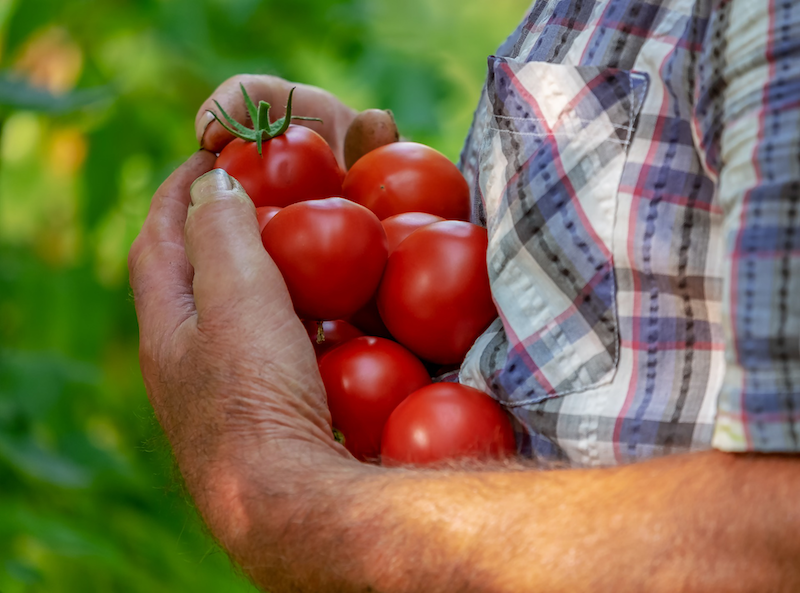
Global warming has taken its toll on our climate, giving us shorter winters and longer, hotter summers. While the warmer weather can sound like a dream fulfilled for some, the effects of global climate change are not all pleasant and they could have adverse effects on our gardens.
What are the challenges of planting gardens in different weather conditions?
You need to be aware of the climate-related issues that will determine how well your garden plants will flourish. These include:
* Temperature: Many plants will only thrive at specific temperatures. So working hard to grow tropical plants in a cold environment because you now have short winters is a waste of time. Similarly, growing plants that are adapted for cold weather in a tropical climate will end in failure. If you notice that you are having short winters due to global warming, you have the option of planting perennials that can endure both cold and hot temperature.
* Rainfall: If your garden is located in a climate with heavy rainfall, you have to prevent over-watering of your plants. You may also decide to grow plants that can stand up against heavy rainfall. For instance, banana, bamboo, sweet potato, tomatoes and plums are suitable for areas with heavy moisture.
* Amount of Light: Do you live in a cloudy climate or do you have bright skies with abundant sunshine? If you live in an area with large bodies of water, like lakes and rivers, you will have cloudy skies with reduced sunshine throughout the year. Because light plays a vital role in the critical photosynthesis process, you need to choose plants that can thrive in less sunlight such as begonias and amethyst flowers.
How does global climate change affect your garden?
Many gardens are now being affected by higher temperatures, increased annual rainfall coupled with air and soil pollution. It’s not uncommon to see cottage gardens, hedges and lawns looking brown and unattractive due to drier summers and shorter and wetter winters.
While the shorter winters that precede early spring and the trees bearing leaves may be attractive to some gardeners, the higher temperatures are a double-edged sword. It is still possible to cultivate sub-tropical plants and some exotic fruits like citrus and cannas. But the rise in winter rainfall will make it hard to grow Mediterranean plants that are not adapted for high moisture and rainfall.
Likewise, the warm and humid temperatures will aid the growth of new pests and increase the risk of many plant diseases. The climatic changes are now making it easy for insects like red spider mite, lily beetle, weevils and a host of fungal diseases to thrive. Also, plants that need moisture retentive soil will not thrive during dry summer months.
How do you choose plants for your garden?
Before you decide to grow plants in your garden, you should find out all you can about your climate zone. You need to note the average rainfall, the precipitation levels, the average temperature during each month, the length of cold and hot seasons and the beginning and end of the frost season.
After you have all the important climatic data, you can choose the appropriate plants for your climate:
* In subtropical and tropical climates, grow heat-tolerant plants. If your garden is located in a warm and humid climate, choose species that grow well in hotter environments. Good examples include: orchids, amaranths, and ferns. In containers, you can plant aloe vera and spider, shifting them around to areas that are cool and moist as the seasons change. Bamboo and different species of banana may also be used as hedges as long as you prune them regularly.
You can also take care of your family’s nutritional needs by growing your own food. By planting edibles such as sweet potatoes, tomatoes, cucumbers, to name a few, you will not only be adopting a more healthy lifestyle, you’ll also be (crucially) reducing your carbon footprint in the process. By reducing your dependence on supermarket-sourced food, you’re also reducing the number of food miles.
* In colder regions, you can plant resilient shrubs and flowers such as the ostrich fern, day-lilies and sorrels. These plants can thrive in low temperatures. When you need to nurse plants, avoid the frost period. Most young plants don’t survive well in very cold temperatures.
Maintenance Tips for a Healthy Garden
Global warming is a reality that can’t be wished away. But with the following tips, you can keep your garden and environment healthy.
* Add organic compost to your soil. Before you do any new planting, prepare your soil with organic matter. It will improve the soil and help your plants to grow faster. Organic soil retains moisture and traps carbon dioxide in the atmosphere while providing nutrients for the root of the plants.
* Adopt low tilling. Low tilling does not disturb the soil through deep digging or turning over. Remember that deep digging and tilling lets out more carbon dioxide – a greenhouse gas. Low tilling also increases the cycling of nutrients and reduces soil erosion.
* Install a smart irrigation timer. This device has water-saving features and a sensor that adapts to optimal times for watering based on weather conditions. You can set up the system to water your garden deeply in the morning while the weather is cool. Deep watering will help the plants to develop deep strong roots.
While the global climate change may have altered the weather conditions in your locality, you can still enjoy a green and thriving garden. By choosing the right plants and maintaining them carefully, you can reduce the adverse effects of climate change.
